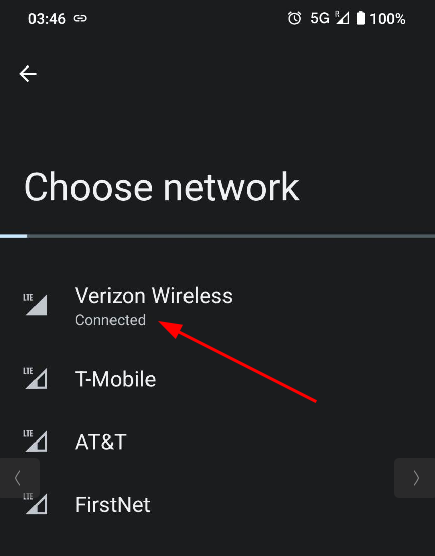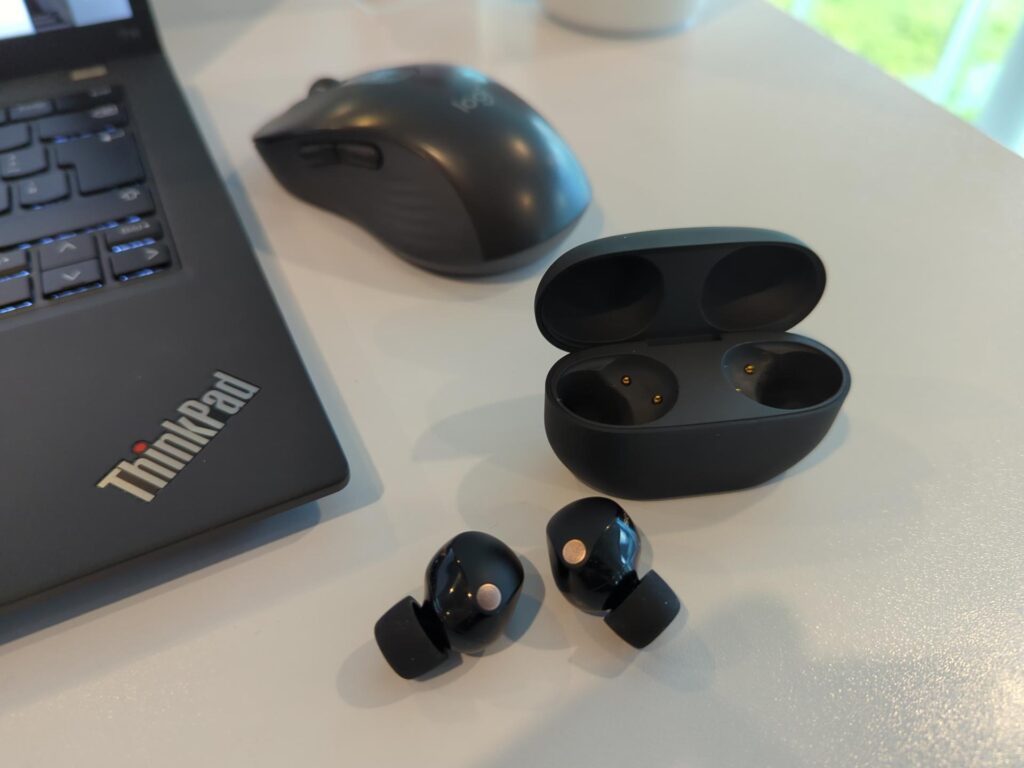While I was in the US, I was using my German SIM card to roam through the different networks. When using a German SIM card, however, all IP data traffic goes back from the US to Germany and from there to the Internet. As the servers for my self-hosted services are in Europe, that’s not much of a problem. However, I also wanted to test some of the US specific features / limitations of mobile Internet access, and was prepared to spend some money to get a Prepaid eSIM from one of the US network operators. Prices in the US are significantly higher than in most countries in Europe, but it would not have kept me away. It turned out, however, that getting a prepaid eSIM from US network operators is not straight forward.
Continue reading Roaming Report – Part 2 – Getting a Local US eSIM – How Hard Can it Be?Author: Martin
Roaming Report – Part 1 – Roaming with Verizon – A First!

It’s March 2024 and for the first time in 5 years (thank you Covid pandemic), I was in the US again. So far, so good, but there is one significant difference this time, at least from a technical point of view: For the first time ever, I’m roaming with Verizon!
Most travelers won’t even notice, but until recently, Verizon in the US could not be an international roaming partner for most travelers, because their 2G and 3G CDMA networks were incompatible with the majority of international networks. Even with the introduction of LTE, this did not change. This was because for GSM/UMTS/LTE/5G network operators, international roaming depended on the 2G/3G circuit switched voice core and the CS-fallback mechanism from LTE/5G to GSM or UMTS. And this is what Verizon could not offer to international operators. But finally, VoLTE roaming is on the rise and it seems my home operator has made a roaming agreement with Verizon. Agreed, most people use Internet based voice calling apps these days, including me, but VoLTE roaming support in devices and networks is still crucial for emergency calling and calls to people that don’t share the same messenger / calling app.
So here we go, one of those rare ‘firsts’! And as the title indicates, I made good use of my time in North America and had a look at a lot of other things while roaming. So stay tuned for more posts to come!
Bose QC Ultra Earbuds – Review

As I was quite disappointed with the Sony WF-1000XM5 noise canceling earbuds, I decided that it made little sense to stick with them and instead went ahead and gave a competitor product a try, the Bose QC Ultra earbuds. So let’s see how that went.
Continue reading Bose QC Ultra Earbuds – ReviewNo More Power Strip When Traveling
10 years ago, I had a little anecdote on this blog about taking a power strip with me when traveling, as the number of devices that needed to be charged kept growing and most of them required their own charger. I kept doing this for many many years, but I recently noticed, that the trend has reversed. The reason: USB-C.
Continue reading No More Power Strip When TravelingSony WF-1000XM5 In-Ear Headset – Review

In my life there is a time before noise cancellation headsets and the time ever since, as noise cancellation has brought so much more silence, peace and concentration when I’m in noisy city, home and office environments. As my current first generation Bose in-ear noise cancellation headset I’ve had for many years are showing signs of battery fatigue and charger connector problems, it was time to look for something new. After shopping around a bit, the two contenders for my refresh where either the latest generation Bose in-ear Bluetooth headset, or the latest Sony variant. In the end, I decided to go for the Sony WF-1000XM5 and I’ve been using them for around 2 weeks now. Was it a good choice? I’m not so sure…
Continue reading Sony WF-1000XM5 In-Ear Headset – ReviewDNS over TLS – Automatic Mode on Android

Recently, I had a look if and how Android uses DNS over TLS (Transport Layer Security), i.e. encrypted DNS queries, and if this is actually configured automatically. It turns out that there is a simple yet nifty automatic procedure in place.
Continue reading DNS over TLS – Automatic Mode on AndroidSome Thoughts on the 6 GHz Band for Wi-Fi and Cellular
Back in December 2023 a number of interesting decisions were made at the World Radio Conference (WRC) in Dubai. One of the most important bands for which a number of decisions were made was the 6 GHz band. Today, spectrum in this band is already used for Wi-Fi, and it is pretty much the only remaining additional spectrum for cellular networks in the next 10 years. The decisions reached for this band make it look like all players took a big gamble.
Continue reading Some Thoughts on the 6 GHz Band for Wi-Fi and CellularInternet Access on Planes in Europe – 2024 Update
In the past two months, I’ve flown form Germany to Spain twice. With a flight time of over 2 hours, it’s actually worthwhile to jump through the hoops and connect to the in-flight Internet over Wifi. I can’t quite believe it, but my last post on in-flight Internet access in Europe is already back from 2018. Yes, Covid got in the way. So let’s have a look at how the system worked for me this time around.
Continue reading Internet Access on Planes in Europe – 2024 UpdateSome Thoughts on 3 GHz Bands n78 and n77 – Europe and the U.S.
It’s been a while since I’ve been in North America, actually it must be close to 4 years. How time flies. Anyway, I might have the opportunity to go there again soon, so I started thinking a bit about the current spectrum situation there, particularly the 3 GHz range for 5G. Back in 2019, quite a number of countries in Europe had auctioned spectrum for 5G in 3GPP band n78 (3300 – 3800 MHz). Most network operators got additional spectrum between 80 and 100 MHz, with some network operators being even luckier and grabbing up to 150 MHz. This was massive compared to previous spectrum auctions for LTE, where channels of typically 10 or 20 MHz in lower frequency bands went on sale. In Europe, band n78 significantly pushed available capacity and network speeds, particularly in cities to previously unknown levels. So lets have a look what happened in the U.S. back then and in the meantime.
Continue reading Some Thoughts on 3 GHz Bands n78 and n77 – Europe and the U.S.Open Wi-Fi OWE Encryption – Part 2
In the previous post, I’ve taken a first look at how the Opportunistic Wi-Fi Encryption looks like for the user and how one can find out high level details on the shell. In short: OWE enables per device encryption in open Wi-Fi networks without the need to type in a password. In this follow up post, I’ll have a closer look at how OWE is advertised by the Access Point and then picked up by devices.
Continue reading Open Wi-Fi OWE Encryption – Part 2